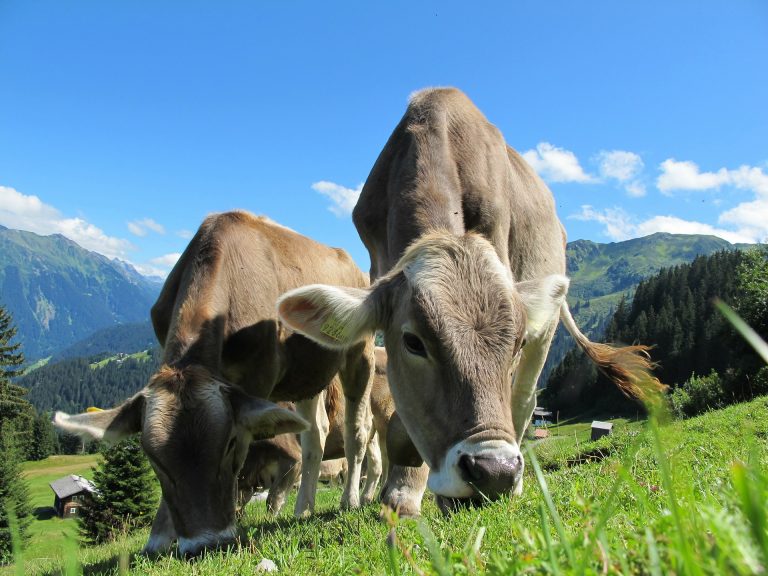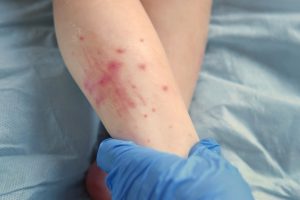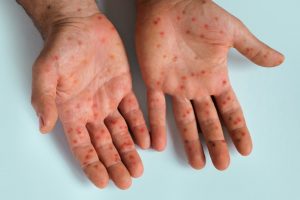Since 12th May 2019, three anthrax outbreaks have been reported in the Maseru district of Lesotho. Twenty-four cattle have died and a further 106 cattle infections are suspected. There has also been a report in a local Lesotho newspaper that over fifty local people became ill after eating meat from cattle that died of anthrax.
The outbreak is ongoing and authorities in Lesotho have initiated control measures to contain the spread of the disease, namely: quarantine and restriction of movement of cattle within Lesotho, surveillance within the quarantine area, official disposal of carcasses, by-products and waste, zoning, disinfection, and vaccination of animals.
What is Anthrax?
Anthrax is an acute infectious disease caused by the bacterium Bacillus anthracis. B. anthracis produces dormant spores that can survive in the environment for decades and are activated into growing bacteria upon entry into an animal or human body. The disease is most common in cattle, goat, sheep and antelopes. Humans are at risk of infection when exposed to the bacterial spores in the environment, or infected animals, through contact with infected animals or contaminated animal products. Cases have been reported worldwide, and veterinarians, livestock producers, those who slaughter animals or handle meat and wool products, and laboratory staff, are at higher risk of acquiring the disease.
There are four forms of anthrax relating to the route of exposure. Cutaneous anthrax, the most common form in humans, is acquired through skin cuts or abrasions. Inhalation anthrax is acquired through breathing in airborne B. anthracis spores from the environment or in animal products; it causes most severe illness as compared to other forms, but is the rarest form. Gastrointestinal anthrax is acquired through ingestion of contaminated food, usually meat from an infected animal. Once ingested, anthrax spores can affect the upper gastrointestinal tract (throat and oesophagus), stomach, and intestines. Injection anthrax is a newly recognized form that is associated with intravenous drug use. Anthrax usually develops 1 to 7 days after exposure.
Preventing exposure in South Africa
Human anthrax cases in South Africa are rare with the last reported case of cutaneous anthrax in 2006 from the Kuboes in the Northern Cape Province. Cases among wild animals are reported intermittently from endemic areas in the northern and central parts of the Kruger National Park in Limpopo Province and in the Ghaap Plateau in the Northern Cape Province. Human cases are sporadic and have mostly been documented among persons with exposure to infected animals or animal products.
In light of the outbreak in Lesotho, livestock owners in provinces neighbouring Lesotho are encouraged to ensure that their livestock is vaccinated against anthrax. Any sudden deaths among livestock in these areas should be reported to the responsible state or private veterinarian or animal health technician for investigation. Carcasses of animals that died suddenly with blood oozing from carcass openings should not be opened or consumed. Animals that are slaughtered at registered abattoirs undergo a thorough examination to ensure meat safety. Trading of animal and animal products takes place in compliance with international recommendations to ensure safe trade.
Common symptoms of Anthrax
In humans
- Cutaneous anthrax: Small sore that develops into a blister. The blister then develops into a skin ulcer with a black area in the center. The sore, blister and ulcer are painless. The area surrounding the sore commonly becomes very swollen.
- Gastrointestinal anthrax: Nausea, loss of appetite, bloody diarrhoea, and fever, followed by severe stomach pain.
- Inhalation anthrax: Fever, chills, sweating, fatigue, malaise, headache, cough, shortness of breath, and chest pain and eventually shock.
In animals
- The sudden death of animal within a few hours without showing any signs of illness
- Blood-stained discharge from the nostrils, mouth and anus
- Fever
- Difficult breathing and/or swallowing due to swelling of organs
- Muscle tremors and redness of the mucous membranes may be observed
Communities are urged to be aware of the following measures to prevent or manage anthrax:
Anthrax in humans can be treated if you get help early. Antibiotics are used to treat anthrax. In most cases, early treatment with antibiotics can cure cutaneous anthrax. Gastrointestinal and inhalation anthrax are more serious and have a high mortality. If left untreated any form of the disease can be fatal.
Prevention of Anthrax
Humans
- The carcasses of animals which died of unknown cause should never be eaten nor have their parts (e.g. skin or horns) removed
- Avoid direct contact with a carcass of an animal suspected to have died of anthrax.
- All contacts, even if not ill, need to be taken to the nearest health facility for evaluation and management.
Animals
- Vaccinate livestock annually against anthrax
- Do not cut open carcasses of animals suspected of dying from anthrax
- Report suspected cases immediately to the nearest animal health technician or state veterinarian
- The state veterinarian may prescribe methods to disinfect the premises, transport vehicles and other products
Consult your nearest health facility immediately when anthrax exposure or infection is suspected.
For more information on anthrax or other diseases read the Anthrax FAQ
For Medical/Clinical related queries: Contact the NICD Hotline +27 82 883 9920 (for use by healthcare professionals only).





